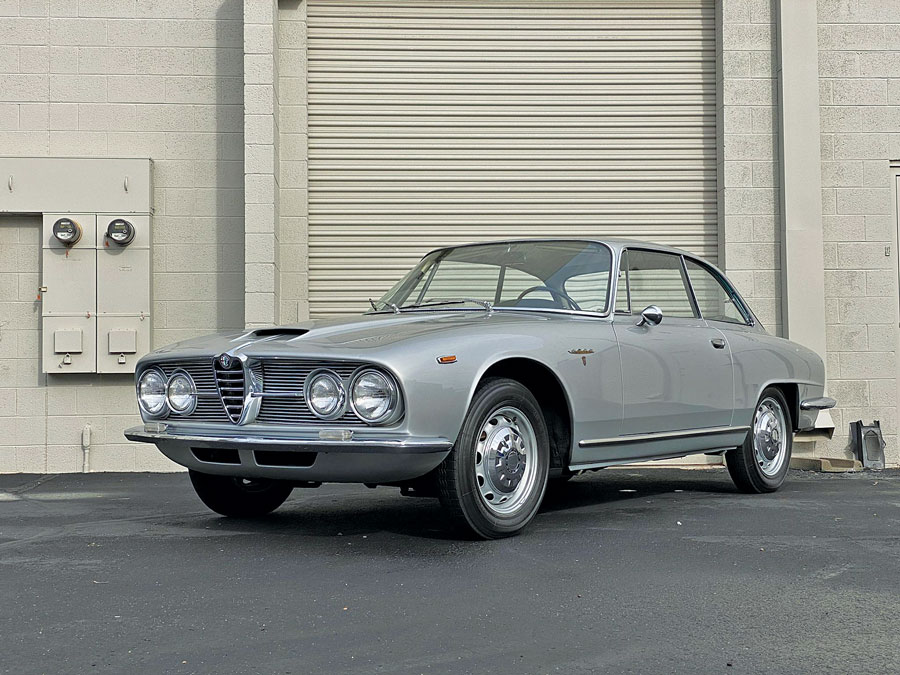
If you live in the Maldives, you are aware that the seas are rising.
Whether temperatures are going up because of diesel emissions, home barbecue grills or cows farting methane doesn’t really matter. In the end, the earth is warming and the ocean is getting higher.
It’s the same with the collector-car market. Values are going up. Whether you attribute the rise in prices to televised auctions, online auction sites, pandemic-inspired demand or even loose monetary policies by the Federal Reserve, the end result is the same. You’ll spend more to buy a car, perhaps much more, than you would have two years ago.
The results from Arizona Auction Week don’t represent a gentle uptick, or a torrential rain, or a flash flood. They are a resetting of pricing across the collector-car board. The tide is rising everywhere. It’s lifting most boats.
This year in Arizona, sales totaled $268.6m from five auctions, handily beating 2021’s $148.6m (a pandemic-disrupted year) and 2020’s $217.7m. In fact, 2022 appears to be the second-highest Arizona sales week ever, behind 2015’s $291m.
SCM will have its regular, exhaustive summation and analysis of Arizona Auction Week in our next issue.
Boom time
Arizona wasn’t an anomaly, a one-off of spending craziness, sparked by thousands of previously cooped-up bidders suddenly free to wave their paddles in the dry air of the Arizona winter.
I have been watching the collector-car market for nearly 40 years and can tell a blip from a boom. This is a boom.
The increase in collector-car values runs the gamut, from VW Beetles to resto-mod Camaros to C8 Corvettes.
Let me speak to the cars that I follow.
For many years, Alfa Romeo GTVs were unloved, weird, high-maintenance sports cars. Their values hovered in the $20k–$30k range, which meant that they were rarely restored. About 20 years ago, I bought what I considered to be a nice 1967 GTV for $18,000. It only needed a suspension rebuild, minor rust repair in the doglegs and a completely new interior including correct seats. That was what a “nice” GTV was like 20 years ago.
In the past few years, “nicer” GTVs started showing up on Bring a Trailer, and they brought nicer prices. As their values increased, more was spent on restoring GTVs to a better level. These better restorations resulted in higher values.
Recently, a handsome but highly modified GTV sold for over $140,000. Heck, you could buy a pretty decent 911S for that amount.
This doesn’t mean that all GTVs are now worth six figures. In fact, several attractive-but-not-stupendous cars have also sold recently for under $60,000.
Nonetheless, the new $60k average price of GTVs is more than double what it was two years ago. And more than three times the $18,000 I spent for mine.
Simply put, the restored GTVs appearing in online sales have increased the collector-car awareness of this model. Putting better cars in front of more bidders has led to rising values.
Better choices, better prices
This increase of higher-quality vehicles being offered, higher prices being achieved and then more cars being offered has been true of other models as well, from F-150 pickups to resto-mod Arkonik-built Land Rovers and even alloy Gullwings.
To me, this is simply a case of better merchandise presented to a larger pool of targeted buyers.
Case in point: A nice-but-not-concours-quality 1963 Alfa 2600 Sprint just sold on BaT for $65,000. For decades, these have been unloved and nearly invisible cars.
I owned one in the ’80s and found that the powerful, silky-smooth 6-cylinder engine made the car a delightful high-speed cruiser. It also had the visual appeal of an upsized GTV, unlike the slightly clumsy look of the 2600 spider. But no one cared about the Sprint.
In the past 20 years, I have seen fewer than five of these cars come up for sale. Those were generally on eBay, which is a backwater for online buying, with low expectations of seller presentation.
None of these cars sold for more than $30,000.
The $65k 2600 auction was looked at by 813 potential bidders, with 9,786 page views. Out of those 813, there were two bidders who felt comfortable crossing the $60,000 threshold.
The trolls were active, tossing out questions about the powerplant, the suspension and the finishes. The seller’s answers reassured the bidders.
A winning equation
The median value of a 2600 Sprint in the SCM Pocket Price Guide is $54,500. These two buyers demonstrated that a car is worth what someone wants to pay today, not what they have sold for in the past. The job of online and land auctions, along with print advertisements, is to get product in front of qualified, motivated buyers who then determine the current market value.
There are now more ways than ever before to target and separate niche collectors from the larger pool of interested people.
In fact, if you are like me, you sometimes end up buying something you didn’t even know you were interested in. When a good example comes along, like our 23,000-mile V12 Jag, and the trolls clap approvingly, and the bidding stalls at an affordable price, it just takes a keystroke to throw your hat in the ring.
There are lots of rings with lots of hats in them right now. The equation is a simple one. More cars of higher quality, targeted to highly motivated buyers, equals higher prices. ♦